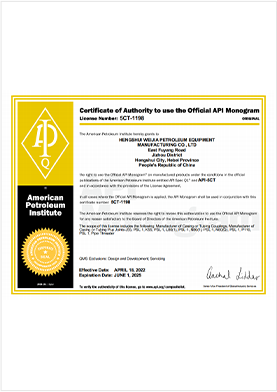- Afrikaans
- Albanian
- Amharic
- Arabic
- Armenian
- Azerbaijani
- Basque
- Belarusian
- Bengali
- Bosnian
- Bulgarian
- Catalan
- Cebuano
- Corsican
- Croatian
- Czech
- Danish
- Dutch
- English
- Esperanto
- Estonian
- Finnish
- French
- Frisian
- Galician
- Georgian
- German
- Greek
- Gujarati
- Haitian Creole
- hausa
- hawaiian
- Hebrew
- Hindi
- Miao
- Hungarian
- Icelandic
- igbo
- Indonesian
- irish
- Italian
- Japanese
- Javanese
- Kannada
- kazakh
- Khmer
- Rwandese
- Korean
- Kurdish
- Kyrgyz
- Lao
- Latin
- Latvian
- Lithuanian
- Luxembourgish
- Macedonian
- Malgashi
- Malay
- Malayalam
- Maltese
- Maori
- Marathi
- Mongolian
- Myanmar
- Nepali
- Norwegian
- Norwegian
- Occitan
- Pashto
- Persian
- Polish
- Portuguese
- Punjabi
- Romanian
- Russian
- Samoan
- Scottish Gaelic
- Serbian
- Sesotho
- Shona
- Sindhi
- Sinhala
- Slovak
- Slovenian
- Somali
- Spanish
- Sundanese
- Swahili
- Swedish
- Tagalog
- Tajik
- Tamil
- Tatar
- Telugu
- Thai
- Turkish
- Turkmen
- Ukrainian
- Urdu
- Uighur
- Uzbek
- Vietnamese
- Welsh
- Bantu
- Yiddish
- Yoruba
- Zulu
casing pup joint
Understanding Casing Pup Joints A Key Component in Oil and Gas Operations
Casing pup joints are specialized tubing sections used in the oil and gas industry, serving a crucial role in enhancing the efficiency and safety of drilling and production operations. These short lengths of pipe, typically ranging from 2 to 10 feet in length, are crucial for making critical connections and adjustments in the casing string. Understanding their design, application, and advantages can help industry professionals optimize production and minimize downtime.
What are Casing Pup Joints?
Casing pup joints are essentially short segments of casing that can be added to or removed from a casing string. They are designed to connect sections of casing and to accommodate specific engineering requirements during drilling operations. Made from the same materials as standard casing, these joints are typically welded or screwed to other sections, designed to withstand high pressure and corrosive environments prevalent in oil and gas wells.
Applications of Casing Pup Joints
Casing pup joints are used in various scenarios within oil and gas operations. One significant application is in adjusting the length of a casing string, ensuring the casing reaches the desired depth without compromising stability. They can also be used to accommodate changes in wellbore direction or to simplify wellhead connections.
Moreover, pup joints play a vital role during the well completion stage, where precise installation of production casing is crucial for optimal performance. They are often utilized to facilitate the installation of specialized downhole equipment, such as packers, valves, and gauges, allowing for effective management of reservoir fluids.
casing pup joint

Advantages of Casing Pup Joints
The use of casing pup joints offers several advantages that contribute to their popularity in the industry. Firstly, their modular nature allows for flexibility during drilling operations. Operators can easily add or remove pup joints to modify the casing string as drilling progresses, enabling adjustments based on real-time drilling conditions.
Secondly, casing pup joints enhance efficiency by reducing the need for custom manufacturing of casing sections. Since standard casing comes in fixed lengths, pup joints allow operators to achieve the necessary lengths without the added lead time and cost associated with producing custom pieces.
Thirdly, pup joints contribute to improved safety and reliability in drilling operations. By ensuring that the casing string maintains its structural integrity, they help prevent issues such as wellbore collapse or fluid migration, which can lead to costly delays and safety hazards.
Conclusion
In conclusion, casing pup joints are a vital component of modern oil and gas operations, offering flexibility, efficiency, and safety. Their ability to connect various sections of casing seamlessly allows for precise adjustments during drilling and completion, ultimately contributing to the overall success of a well. As the industry continues to evolve, the role of casing pup joints remains significant, underscoring the importance of this seemingly simple yet crucial element in the complex world of oil and gas extraction. Understanding and utilizing casing pup joints effectively can lead to more efficient operations, thereby maximizing production and ensuring safety in the dynamic environment of oil and gas drilling.
-
Well Casing Extension Couplings – Applications and InstallationNewsJun.06,2025
-
Types of Crossover Subs in Drilling & CompletionNewsJun.06,2025
-
Key Features of High-Quality Tubing Pup JointsNewsJun.06,2025
-
Installation and Maintenance Tips for Steel Couplings for PipeNewsJun.06,2025
-
How to Select the Right Pup Joint for Oil & Gas OperationsNewsJun.06,2025
-
Applications of Stainless Steel Pipe CouplingsNewsJun.06,2025







